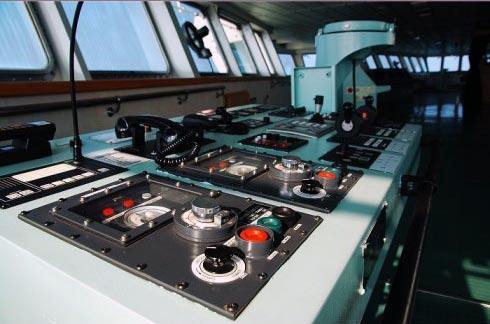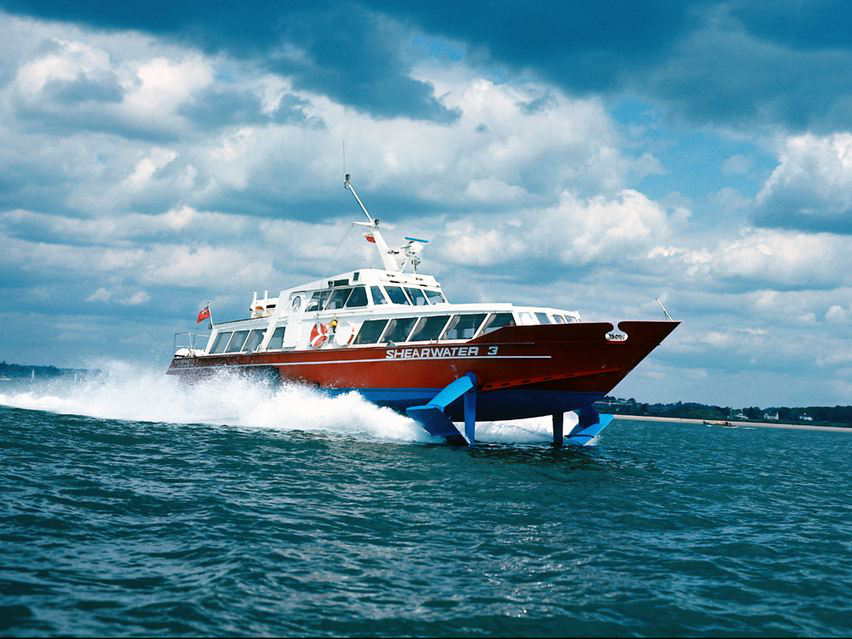1. The application of adhesive on ship hull
1. Application in ship hull composite materials
Marine glass fiber reinforced plastic, namely glass fiber reinforced plastic, is characterized by light weight, high strength, corrosion resistance, chemical adhesion resistance, good dielectric and microwave penetration, good impact electric field, beautiful appearance, excellent designability, low cost, and simple process Gluing and mechanical connection are generally used in the assembly of glass fiber reinforced plastics, which not only utilizes the advantages of glue connection, but also ensures the sufficient strength and reliability of the joint. The connecting steps are first glued and then mechanically connected, which is a common complication of FRP joints in the shipbuilding industry.

Application of Adhesive in Shipbuilding Industry
2. Application in hull metal structure
In the hull metal structure of ships, a large number of metal alloy materials such as carbon steel high-strength steel, high-quality carbon structural steel alloy structural steel, cast steel, cast iron, aluminum alloy, magnesium aluminum alloy, and titanium alloy are used. These metal main structures are generally connected by welding, but in order to reduce stress concentration and improve the chemical corrosion resistance of different metal materials, they can be connected by adhesive bonding. Such as two-component epoxy resin, two-component epoxy resin and so on.
3. Application of submarine anechoic tile installation
Acoustic tile technology is an effective means to suppress noise and vibration, reduce the intensity of the acoustic target of the ship, and improve the concealment of the submarine. It has been widely adopted by the world's naval powers. Acoustic tiles are generally composed of synthetic rubber and other high-molecular polymers, such as styrene butadiene rubber materials, polyurethane fiber materials and polysulfide rubber. Nuclear submarines and other submarines in various countries have large areas of anechoic tiles. This adhesive needs to have absorption. High strength, impact resistance, good overcoming, salt spray resistance, seawater resistance, vibration resistance and even a certain damping and noise reduction performance. Modification, organic rubber, etc.
2, the application of adhesives in ship outfitting systems
1. Application in cabin foam materials
The sandwich structure of the ship cabin is generally filled with honeycomb structure and foam material, such as polyurethane foam, phenolic foam, etc. The use of honeycomb structure and foam material can enhance the mechanical properties of the cabin, such as reducing the structural weight and improving the structural strength. In addition to strength when choosing an adhesive, it is also necessary to consider the use temperature, smoke conditions and its compatibility with core and panel materials. If co-curing with the panel material is selected, the curing conditions of the adhesive or film need to be consistent with the co-curing conditions of the panel. Multi-substituted two-component epoxy resin, two-component polyurethane, etc.
2. Application in cabin floor anticorrosion
The cabin floor materials are generally: PVC artificial leather floor, PVC hard floor, PVC soft floor and rubber floor. The floor is generally fixed to a steel plate or aluminum alloy plate by gluing. It is required to be non-toxic, odorless, flame-retardant, oil-resistant, water-resistant and acid-base corrosion resistant. Multi-substituted silicone or modified silicone adhesives.
3. Application in cabin interior
The preferred fixing method for the interior decoration of the cabin is gluing. For example, instruments, meters, instrument accessories, plastic pipes, plastic panels, wallpaper, etc. are all fixed with adhesive. In order to ensure the health and comfort of the crew, non-toxic, odorless, flame-retardant and environmentally friendly adhesives are extracted from the internal adhesives in the cabin.

Application of Adhesive in Shipbuilding Industry
4. Application in adding the base layer dressing of the non-flammable deck
In order to prevent the ship’s engine room or cargo warehouse from catching fire, the fire spread to the living room and control room. It is necessary to lay the base layer dressing of the non-flammable deck in the living room, control room, corridor, and stairway. The non-flammable deck base dressing has good high temperature resistance. For the substitute of the non-flammable deck base dressing, flame retardant adhesives are required. Such as water-based white latex, two-component polyurethane. Harmony and flame retardancy can effectively prevent the fire from spreading from the lower deck to the upper deck.
3. Application in ship machinery system
1. Application in the connection of ship stern shaft and propeller
Ship propellers and tail shafts have always been connected by "keys" in the past. This connection method requires very high requirements on the connection surface of the shaft hole. It not only requires a lot of processing man-hours, but also requires heavy manual brushing. The process not only saves the processing of keys and keyways, but also saves heavy manual wiping procedures, which greatly reduces labor intensity, changes the shipbuilding cycle, and improves the product quality at the same time, and it will not cause the phenomenon of difficult disassembly of the propeller due to seawater corrosion. . The modified resin has the characteristics of seawater resistance, water resistance, oil resistance, etc., has good viscosity and bonding strength, and has good real ship application performance.

Application of Adhesive in Shipbuilding Industry
2. Application in center correction of ship main engine guide plate
Traditional ship main engine guide plate center correction adopts the drawing method, which is complicated in process and low reliability. Now the gap of the guide plate is filled with adhesive, and the guide plate center is fixed at one time after curing, which saves time and effort, reduces the labor intensity of workers, and has high reliability. . The correction of the center of the ship's main engine guide plate has been successfully reduced.
3. Application in fixing gaskets of ship main engine and auxiliary engine
The main engine and auxiliary engine of the ship are usually interconnected with the hull structure by using steel or cast iron spacers. The requirements for metal spacers are particularly strict. The contact area is not less than 75%. There must be 3~4 grids within the range of 25×25mm2, so wipe the main engine Blocking is a complicated task. The use of epoxy resin now replaces metal spacers, shortening the shipbuilding cycle and improving economic benefits.
4. Application in fixing the tail shaft and copper sleeve
The ship's tail shaft is directly connected to the propeller as a power transmission component. It is made of steel and is easily affected by the corrosion of seawater. Therefore, a copper sleeve is used to protect the tail shaft from seawater erosion. The traditional method adopts the interference method to install, that is, heat the copper sleeve and put it into the tail shaft. However, this method is not easy to master. The heating temperature is too high and the copper sleeve will be ruptured, and the temperature is too low and the distortion will make the copper sleeve difficult to advance and retreat, causing the copper sleeve to crack . The use of anaerobic structural glue in addition to the need to use adhesives for fixing the tail shaft and the copper sleeve, and the fixing of various valve seats inside the hull can also use adhesives, which can simplify the process and improve efficiency.
4. Application in ship repair
Ship equipment, such as power plants, has been affected by vibration, wear and corrosion for a long time, causing cracks in parts, changes in shape and size, and affecting performance. After the marine machinery parts are processed, defects such as blisters, cracks, and pores will be found, which will affect the deformation and reliability of the parts. The use of adhesives to repair various corrosion, abrasion, aging, sand, pores, cracks and other defects can increase work efficiency, simplify the repair process, and reduce costs. Especially in some areas where welding technology cannot be used, such as underwater repair, oil tanks of transport ships, natural gas tanks, and the use of adhesives are more necessary. Recommended reading: "[Adhesive Used in Automobile Industry] Introduction to Adhesive Used in Power Battery of New Energy Vehicle and Its Application-Han Gundam"
1. Application in repairing sand holes, cracks and perforations of marine equipment parts
Many large parts of ships, such as the main engine frame, frame, cylinder, cylinder head intake valve, etc., bear huge load for a long time, and are prone to cracks. They are mostly cast iron materials. If it is difficult to repair by welding technology, epoxy is often used. Resin repair agent, acrylic structural additives-buckle method, can solve the problem, ensure the reliability of the parts, but also beautiful, and the process is simple, and the cost is reduced.

2. Application in repair of ship power transmission device
The repair of ship power transmission devices and the repair of other equipment have particularly high requirements for strength. Welding technology cannot eliminate internal stress and adversely affects the reliability of machinery. Simple adhesive technology cannot withstand high-load operation, so rings are often used. Oxygen resin repair glue adhesive-buckle method to repair.
5. Application of sealant in ship repair
Sealant is a kind of sealing material that can deform with the change of the sealing surface, has good wettability to the sealing surface, is not easy to flow, and has a certain strength, waterproof, dustproof, heat insulation, and mechanical vibration resistance. Compared with general adhesives, it has higher requirements for bonding strength, wettability, orientation, stability to the medium, and no corrosion of the sealing surface. In order to protect the ship's hull and equipment from twisting and corroding, a large amount of silicone or modified silicone sealant is required for ships sailing in the penetrating environment of rivers, lakes and seas. In addition, there are a lot of displacements inside the ship, and the cables also need to be sealed.
1. Use in ship duct system
Ships have a very complex piping system, their own pipelines such as drain pipes, steam pipes, fuel pipes, lubricating oil pipes, refrigerant pipes, sea water pipes, etc. The supporting facilities pipelines also include petroleum pipelines, liquefied petroleum gas pipelines, etc., and these pipelines have different working conditions. It is not the same, from minus tens of degrees to Baidu, the pressure is also different, the highest withstand pressure can reach 8 MPa, a simple adhesive cannot meet the requirements, and more adhesives and sealants are used at the same time, and the disassembly can be reduced skill.
2. Use in ship doors and windows, decks, walls, etc.
Ship doors and windows are mostly made of aluminum alloy materials. In order to avoid electrochemical corrosion of hull steel and aluminum alloy doors and windows, adhesive sealants are often used, which are rubber sealants. When the ship deck is filled with adhesive, sealant is needed to fill the joints. The use of sealant can greatly increase the height of the deck and reduce maintenance costs.
3. Use in marine precision equipment
Radome is generally selected to be aligned elastic sealant, such as polyurethane sealant, silicone sealant, usually up to 15%. More than years. The "ship black box" is similar to the "aircraft black box". It is a device to record the navigation of a ship, especially the condition of the ship's hull during a shipwreck accident, which plays an important role in accident analysis. Due to the special environment of the ocean, the sealing material is generally required to be able to withstand high temperature of 1100℃ and high pressure of 60MPa. According to some studies, it is still a blank state.
 Scan and pay attention
Scan and pay attention
 Wechat consulting
Wechat consulting